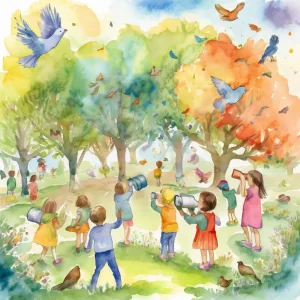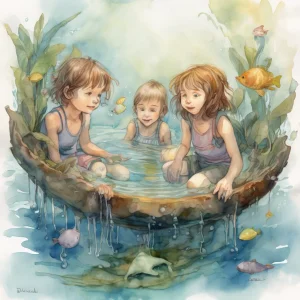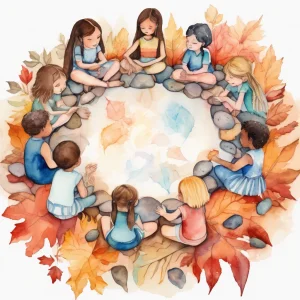Activity
Similar Activities
Symmetry Magic: Reflective Art Adventure
Children’s Age: 7–10 years
Activity Duration: 10 – 25 minutes
This activity involves exploring symmetry through a creative and interactive art project for children aged 7-10 years.
Activity Duration: 10 – 25 minutes
Bridge Builders: Eco Teamwork and Critical Thinking
Children’s Age: 8–9 years
Activity Duration: 10 – 25 minutes
An eco-conscious activity where children build bridges using popsicle sticks and tape to support toy cars, promoting teamwork and environmental awareness.
Activity Duration: 10 – 25 minutes
Picnic Adventure: Pretend Cooking Play for Toddlers
Children’s Age: 2–3 years
Activity Duration: 10 – 30 minutes
An imaginative activity where children (ages 2-3) engage in pretend cooking during a picnic adventure.
Activity Duration: 10 – 30 minutes
Enchanted Measurement Adventures: Measuring Real-World Objects Scavenger Hunt
Children’s Age: 5–10 years
Activity Duration: 10 – 20 minutes
An educational activity engaging children in measuring real-world objects through a fun scavenger hunt.
Activity Duration: 10 – 20 minutes
Nature Shapes Adventure: Bird Watch & Scavenger Hunt
Children’s Age: 4–5 years
Activity Duration: 10 minutes
An outdoor activity for children aged 4-5 years combining bird watching and shape recognition.
Activity Duration: 10 minutes
Nature's Objects: Exploring Buoyancy Adventure
Children’s Age: 6–7 years
Activity Duration: 10 minutes
An engaging hands-on activity for children aged 6-7 to explore buoyancy with natural objects.
Activity Duration: 10 minutes
Musical Straw Pan Flute Symphony Adventure
Children’s Age: 6–9 years
Activity Duration: 10 minutes
Create a homemade pan flute using plastic straws to explore music and physics concepts.
Activity Duration: 10 minutes
Musical Freeze Painting: A Creative Dance Adventure
Children’s Age: 3 years
Activity Duration: 10 – 20 minutes
An engaging activity combining painting with musical freeze dance to promote creativity and play skills.
Activity Duration: 10 – 20 minutes
Enchanted Tales: Family and Friends Story Theater
Children’s Age: 2–7 years
Activity Duration: 10 – 25 minutes
An interactive storytelling activity promoting language, academic, and social development.
Activity Duration: 10 – 25 minutes
Enchanted Tea Party Adventure: A Magical Journey
Children’s Age: 3 years
Activity Duration: 10 – 15 minutes
Join us for a Magical Tea Party Adventure! Enhance your child's play skills, social-emotional growth, and language abilities through a whimsical tea party experience. Gather teacup…
Activity Duration: 10 – 15 minutes
Exploring Nature's Wonders: Nature Photo Journal
Children’s Age: 12–16 years
Activity Duration: 35 – 45 minutes
The "Nature Photo Journal" activity is tailored for children aged 12 to 16, aiming to boost communication skills and ecological consciousness. Participants will need digital camera…
Activity Duration: 35 – 45 minutes
Nature's Patterns: Exploring Geometric Symmetry Journey
Children’s Age: 4–6 years
Activity Duration: 10 – 15 minutes
Embark on the "Exploring Nature's Patterns" activity to discover geometric shapes and symmetry in nature. Children will enhance adaptive skills, language, and ecological awareness …
Activity Duration: 10 – 15 minutes



























